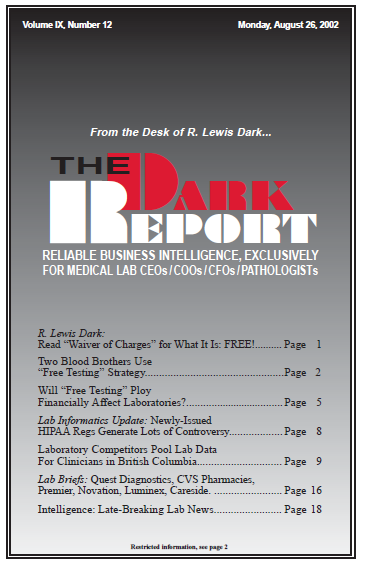CEO SUMMARY: It’s a marketing scheme which public lab companies have quietly used for years. Now there is evidence that the use of “Waiver of Charges to Managed Care Patients” (free testing) seems to be on the increase, raising new questions about how and why competitive practices are changing. Will the two blood brothers use …
Will “Free Testing” Ploy Financially Affect Labs? Read More »
To access this post, you must purchase The Dark Report.


